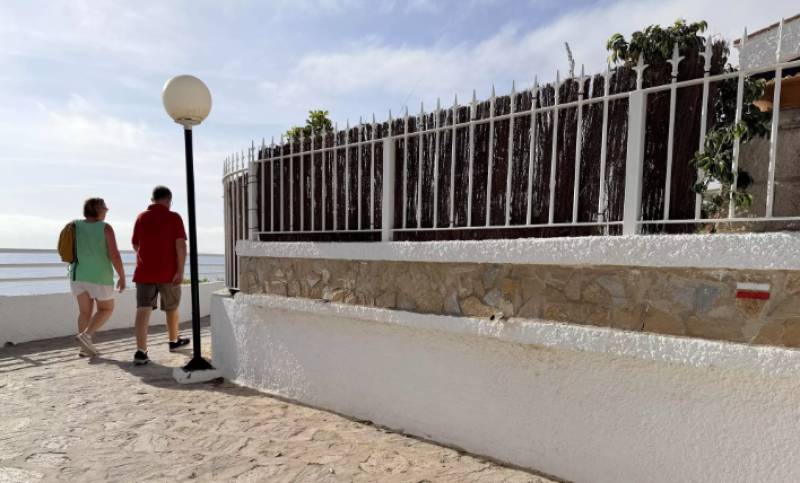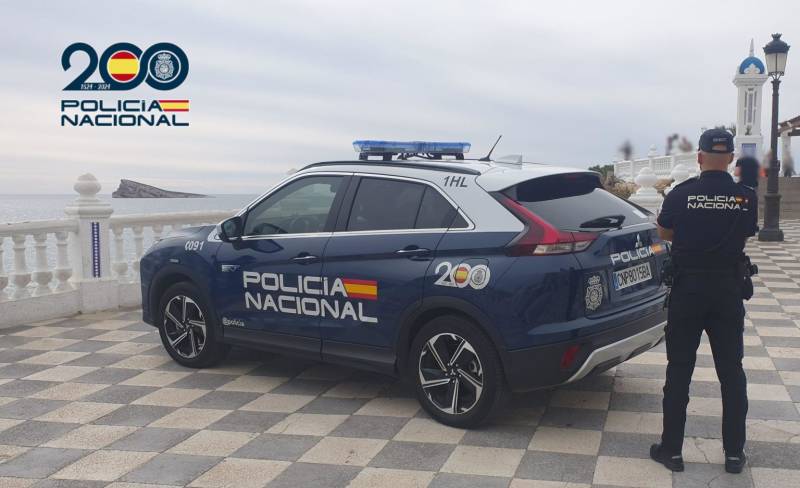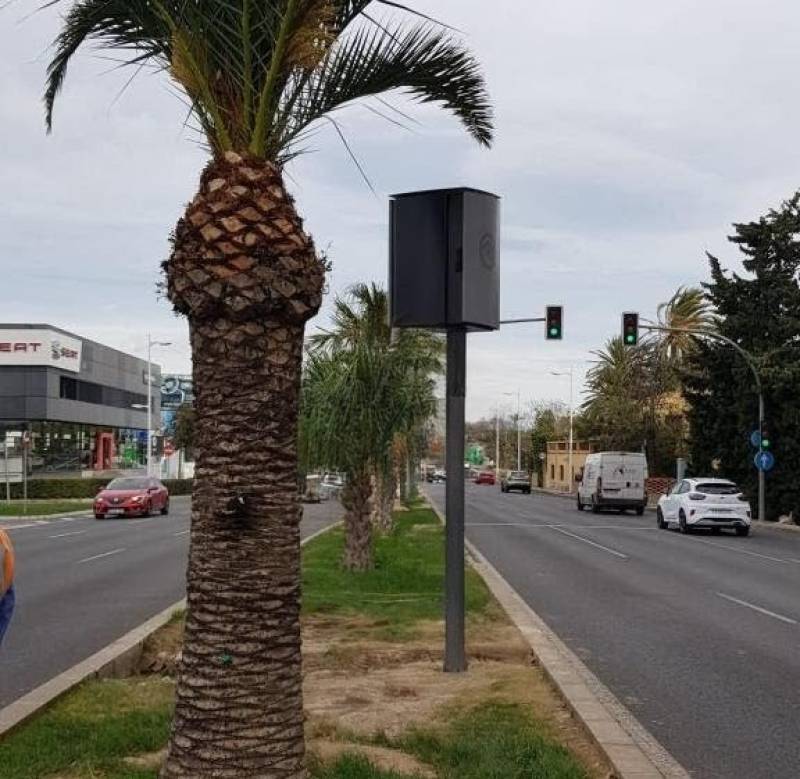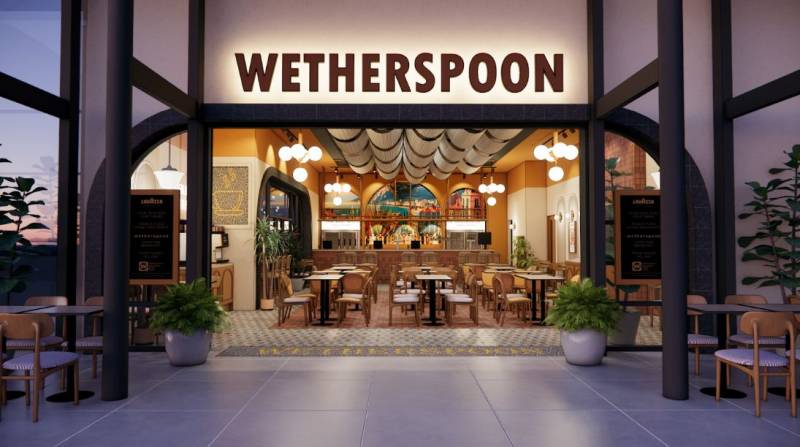

Guidelines for submitting articles to Las Terrazas Golf Resort Today
Hello, and thank you for choosing El Valle Today.com to publicise your organisation’s info or event.
Las Terrazas Golf Resort Today is a website set up by Murcia Today specifically for residents of the urbanisation in Southwest Murcia, providing news and information on what’s happening in the local area, which is the largest English-speaking expat area in the Region of Murcia.
When submitting text to be included on Las Terrazas Golf Resort Today, please abide by the following guidelines so we can upload your article as swiftly as possible:
Send an email to editor@spaintodayonline.com or contact@murciatoday.com
Attach the information in a Word Document or Google Doc
Include all relevant points, including:
Who is the organisation running the event?
Where is it happening?
When?
How much does it cost?
Is it necessary to book beforehand, or can people just show up on the day?
…but try not to exceed 300 words
Also attach a photo to illustrate your article, no more than 100kb

Romería al Monasterio de Santa Faz ( La Peregrina) in Alicante
The Romería de la Santa Faz is held on the second Thursday after Easter Sunday
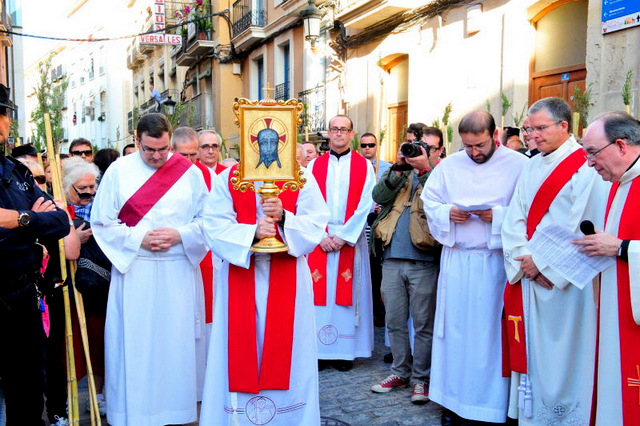 Each year on the second Thursday after Easter Alicante holds its traditional Romería al Monasterio de la Santa Faz, ( also known as La Peregrina) an eight kilometre walk from the Cathedral in the centre of Alicante, the Concatedral de San Nicolás de Bari, to the Monasterio de la Santa Faz.
Each year on the second Thursday after Easter Alicante holds its traditional Romería al Monasterio de la Santa Faz, ( also known as La Peregrina) an eight kilometre walk from the Cathedral in the centre of Alicante, the Concatedral de San Nicolás de Bari, to the Monasterio de la Santa Faz.
Tens of thousands of people walk the route to the Monastery of la Santa Faz, where the original reliquary is held under lock and key, the romería lead by a copy of the reliquary, and the Bishop of the Orihuela Diocese.
The reliquary is an image of la "faz" de Cristo ( see next paragraph) and has been venerated in Alicante since 1489.
According to popular legend, the “Faz” de Cristo was created while Jesus was carrying the cross on which he 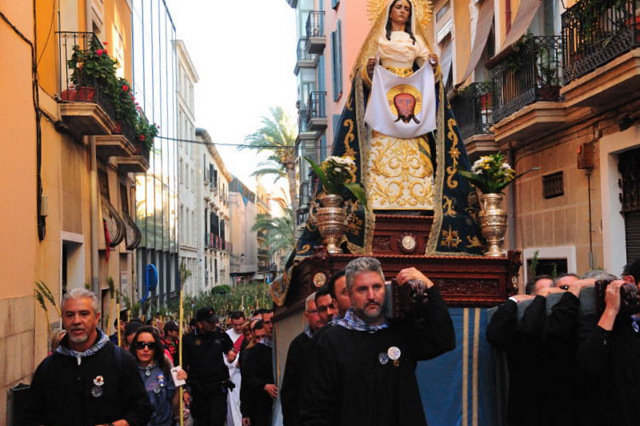 would ultimately be crucified to Golgotha, when he stumbled, unable to see his route as sweat, dust and blood dripped down into his eyes. An onlooker in the crowd, a pious woman called Veronica, handed him her veil so that he might wipe the sweat from his eyes. When Jesus handed back the veil, three images of his face had been imprinted into the cloth. The figure of the “mujer Verónica” holding the veil in front of her, showing the face of Christ, is one of the best known figures which parades in the Semana Santa just 2 weeks before this romería and is widely depicted in sculptural representations. There are many reliquaries claiming to be the original veil of Veronica, and many pieces of linen with images painted on using various techniques which were given as “original”reliquaries in the Middle Ages.
would ultimately be crucified to Golgotha, when he stumbled, unable to see his route as sweat, dust and blood dripped down into his eyes. An onlooker in the crowd, a pious woman called Veronica, handed him her veil so that he might wipe the sweat from his eyes. When Jesus handed back the veil, three images of his face had been imprinted into the cloth. The figure of the “mujer Verónica” holding the veil in front of her, showing the face of Christ, is one of the best known figures which parades in the Semana Santa just 2 weeks before this romería and is widely depicted in sculptural representations. There are many reliquaries claiming to be the original veil of Veronica, and many pieces of linen with images painted on using various techniques which were given as “original”reliquaries in the Middle Ages.
The story of how a reliquary of the Santa Faz came to be in Alicante dates back to the 15th century, an era in which Alicante was seeking to establish itself as a city, yet lacked substantial historical buildings, miracles, reliquaries, convents or monasteries of any note.
The impetus to launch Alicante onto the religious stage and establish it as a centre of worship came from the 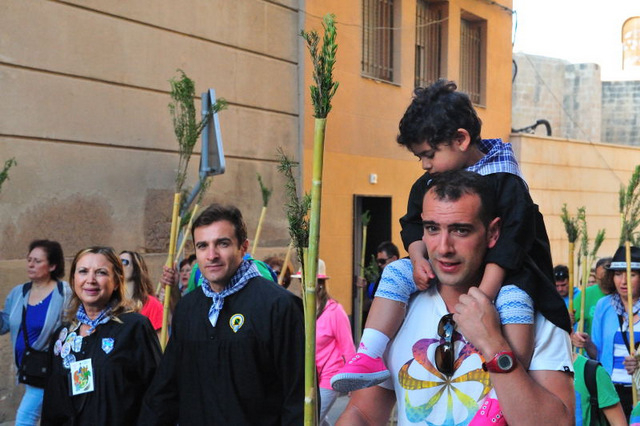 hand of Pedro Mena, a simple Priest who was given the reliquary of La Santa Faz by a Cardinal while visiting Rome as thanks for the hospitality shown to him during a visit he himself had made to the city of Alicante.
hand of Pedro Mena, a simple Priest who was given the reliquary of La Santa Faz by a Cardinal while visiting Rome as thanks for the hospitality shown to him during a visit he himself had made to the city of Alicante.
During his visit, Pedro Mena accumulated a number of precious relics to take back to the centres of worship in Alicante, and put the Santa Faz at the bottom of his trunk. Yet every time he opened his trunk, the linen appeared at the top of the chest.
Arriving back in Alicante, he imparted this piece of miraculous news to the locals, who begged him to take the Santa Faz out into the fields with them to pray for rain, as the area was suffering from extreme drought and all faced starvation as crops withered and died.
On the 17th March 1489, the priest acceded to their wishes: the Santa Faz was mounted and carried out towards the ermita de Los Angeles, set on a slight ridge above the dry water way of the Barranco de Lloixa, but suddenly, the priest carrying the Santa Faz felt a tremendous weight and a tear fell from the right eye of the image on the linen.
In the light of this first miracle a decision was taken to postpone the prayers until the following week, by which time the word had spread and the faithful travelled from far and wide to join in with the service. On the morning of 25th March 1489, there were so many people waiting to pray, that the decision was taken to carry the Santa Faz outside. As the blessing was given, the second miracle occurred: as the Santa Faz was raised 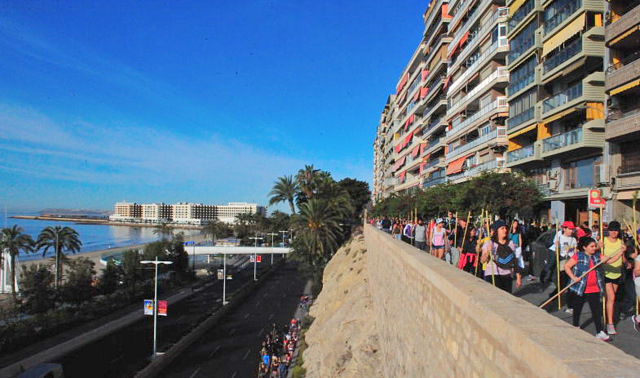 up towards the sky in supplication it began to rain.
up towards the sky in supplication it began to rain.
The hermitage became a centre of pilgrimage, and in 1491 the existing building was built on the same site as the original small hermitage where the miracle had taken place. The building which can be seen today was concluded in 1766, designed by José Terol and Fray Francisco Cabezas, built next to the defensive fortifications erected in 1582 to protect the inhabitants from one of the regular Berber pirate attacks which ravaged this coastline following the expulsion of any Moors who declined to convert to Catholicism after the completion of the Reconquist in 1492, when Isabella and Ferdinand defeated the last Moorish ruler in Spain and brought the Kingdom of Granada back under Spanish rule. ( the Moors dominated southern Spain for more than 500 years, between 711 and 1243 when large swathes of southern Spain were reconquered by the Catholic forces of Castille y León and Aragón).
La Peregrina
The Romería is also often referred to as La Peregrina and takes place on the second Thursday after Easter Sunday and is a core date in the local calendar of the modern City.
Many thousands participate, the multitude averaging anywhere between 200 and 250,000 people depending on the days on which the romería falls and the weather, although those who prefer to avoid the crowds make the journey on foot either side of the main day.
From 7am in the morning, 10.000 bamboo canes, each topped with a sprig of rosemary, are distributed to 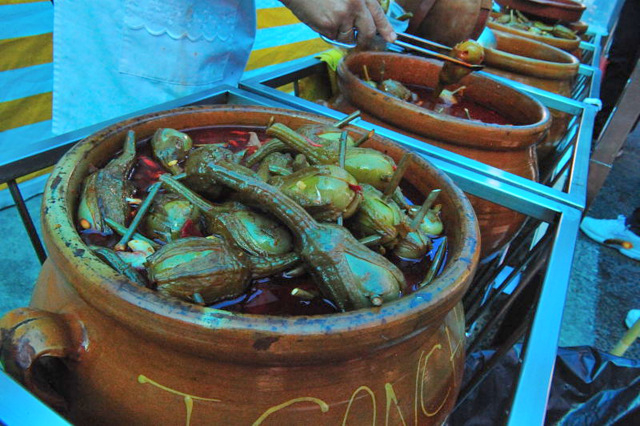 those participating in the romeria, 4.000 by the Cathedral, the Concatedral de San Nicolás and 6.000 from the basement of the Town Hall, the Ayuntamiento.
those participating in the romeria, 4.000 by the Cathedral, the Concatedral de San Nicolás and 6.000 from the basement of the Town Hall, the Ayuntamiento.
Some of the “romeros” wear black smocks, dressed with a blue and white ( the colours of Alicante) neck-kerchief, although for most, the dress is casual, with practical footwear and backpacks containing bottles of water almost mandatory. As the day concludes with a family celebration, groups of youngsters push shopping trolleys full of refreshments, wearing matching t-shirts and music to entertain them en-route, while family groups with pushchairs for the youngest members of the family and wheelchairs for the most mature are also common.
At 8am the Virgen del Socorro and a copy of La Faz emerge from the Cathedral, the Concatedral de San  Nicolás de Alicante, accompanied by drummers and a band, the procession joined by the thousands of people waiting around the Cathedral, who follow in the narrow streets of the old city.
Nicolás de Alicante, accompanied by drummers and a band, the procession joined by the thousands of people waiting around the Cathedral, who follow in the narrow streets of the old city.
Marked along the route are the stations of the cross, the Vía Crucis, marked out by sandstone crosses erected in 1950, each carrying a tiled image of the station it represents, recounting the events which took place in the last week of the life of Christ, a reading given at each station, although the romería continues at a pace without stopping other than for the Virgen del Socorro to peel off and conclude her journey in the Basilica de Santa María.
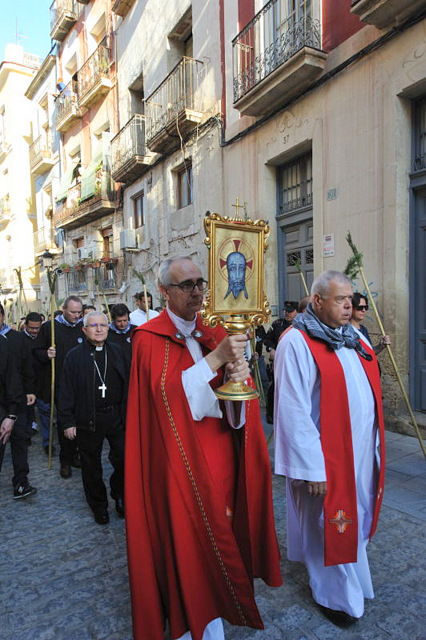 The Romeria continues, taking a route through the centre of Alicante via Calle Miguel Soler, Calle San Nicolás, Calle Mayor, Plaza Santa Faz, Calle Villavieja, Calle Virgen del Socorro, before spreading out onto the main Avenida de Denia and the main Carretera Alicante – Valencia, the principal axis of the city.
The Romeria continues, taking a route through the centre of Alicante via Calle Miguel Soler, Calle San Nicolás, Calle Mayor, Plaza Santa Faz, Calle Villavieja, Calle Virgen del Socorro, before spreading out onto the main Avenida de Denia and the main Carretera Alicante – Valencia, the principal axis of the city.
A steady flow of people file closely behind like a liquid river of marching feet, the numbers growing at every intersection and junction as thousands more feed into the slowly swelling mass.
Part way along the route, walkers are refreshed with sweet aniseed rolls and local wine, vino de Fondillón (rollos de anís and mistela) at the Paraeta municipal, although the priests leading the romería set a cracking pace and those who stop soon find themselves well behind the leading flag. This tradition began when the owners of the land through which the romería passes invited the municipal authorities and priests into their home to shelter from a sudden storm, offering these same refreshments.
At 10am the Romeria arrives at the monastery.
The original reliquary is kept under lock and key inside the monastery itself. To preserve the integrity of the 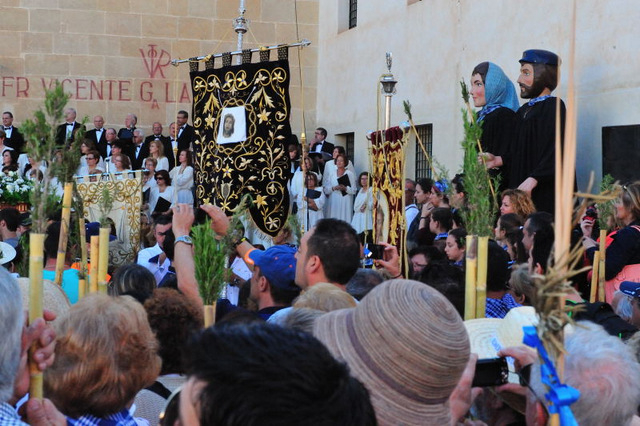 relic, statutes were first laid down in 1636, which were then amplified in 1669 by King Carlos II, limiting the number of times the relic could be brought out into the open and establishing the formalities which should be respected on those occasions. The relic is protected by a system using four keys to open the case in which it is held, two in the possession of the Town Hall, the other two held by the monastery. In the days preceding the romería, the council chooses two councillors who carry their two keys during the procession, while the other two are held by the Abbess. On arrival, the Mayor( ess) of Alicante enters the church and the council order to open the case is read out, this act undertaken by the two designated “Caballeros Custodios” whose mission is to protect the relic from the moment it is taken out and ensure it returns to the case in which it is held in the same condition in which it left.
relic, statutes were first laid down in 1636, which were then amplified in 1669 by King Carlos II, limiting the number of times the relic could be brought out into the open and establishing the formalities which should be respected on those occasions. The relic is protected by a system using four keys to open the case in which it is held, two in the possession of the Town Hall, the other two held by the monastery. In the days preceding the romería, the council chooses two councillors who carry their two keys during the procession, while the other two are held by the Abbess. On arrival, the Mayor( ess) of Alicante enters the church and the council order to open the case is read out, this act undertaken by the two designated “Caballeros Custodios” whose mission is to protect the relic from the moment it is taken out and ensure it returns to the case in which it is held in the same condition in which it left.
The reliquary is then carried outside and shown to those who have filled the little plaza in front of the building, the plaza de Luis Foglietti. The plaza is jammed full, and there is a static queue stretching right back down to the entrance of the village listening to the service on loud speakers, while thousands more continue to pour into the area behind the monastery where the refreshments stands and funfair are located. Following this, mass is celebrated by the Bishop of the Diocese of Orihuela, which encompasses Alicante, before the reliquary is returned to the safety of the church and put back under lock and key.
The participants disperse, enjoying the rest of the day in the company of friends and family, spreading into the 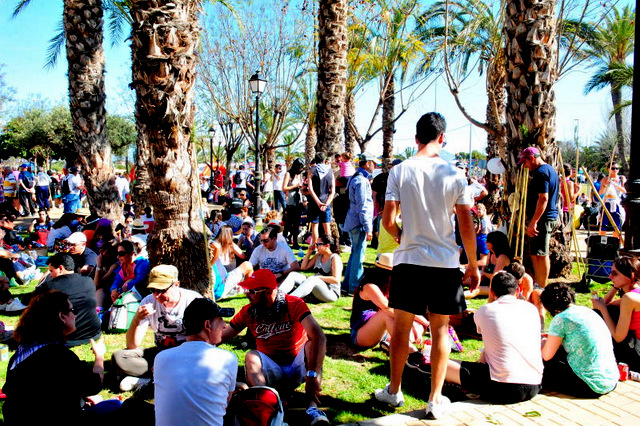 area behind the Monastery where the park is filled with a large funfair, and dozens of stalls selling refreshments and gifts. Sweet sugar cane is sold in dripping chunks, candy floss in huge spun balls, toffee apples dipped in sweet red melted sugar offer a crisp treat, tangy pickled aubergines from Ciudad Real washed down with earthy red wine, satisfying empanadillas stuffed with tomato and tuna, while almonds toast and meat BBQ’s on sizzling racks, the air filled with woodsmoke, baking cakes and chattering voices.
area behind the Monastery where the park is filled with a large funfair, and dozens of stalls selling refreshments and gifts. Sweet sugar cane is sold in dripping chunks, candy floss in huge spun balls, toffee apples dipped in sweet red melted sugar offer a crisp treat, tangy pickled aubergines from Ciudad Real washed down with earthy red wine, satisfying empanadillas stuffed with tomato and tuna, while almonds toast and meat BBQ’s on sizzling racks, the air filled with woodsmoke, baking cakes and chattering voices.
And more people flow in to the park for hours afterwards: arriving both on foot and in the buses provided, which are rapidly refilled by those wishing to return to the city centre, the whole operation perfectly organised, efficient and inexpensive ( 1.40€ a ticket).
The party continues all day, participation almost mandatory for residents of the city every year, groups of youngsters ending up on the beaches, families enjoying the atmosphere of the artisan market and funfair, sharing picnics and snacking from the many stands before paying their final respects inside the monastery itself and then catching the bus home.
Practicalities of participating in the Romería
Road closures
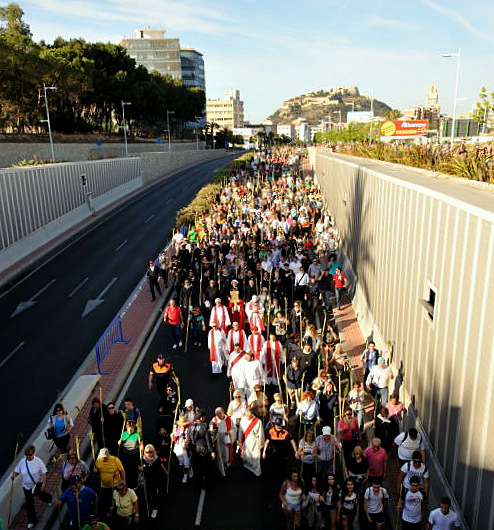 The main centre of the city surrounding the cathedral is closed off from first light, as is the pilgrimage route itself. The left hand side of the main Carretera Alicante – Valencia is also completely closed off, although the right hand side is open for traffic and the buses ferrying participants to each end of the romería.
The main centre of the city surrounding the cathedral is closed off from first light, as is the pilgrimage route itself. The left hand side of the main Carretera Alicante – Valencia is also completely closed off, although the right hand side is open for traffic and the buses ferrying participants to each end of the romería.
There is plenty of parking in all the main carparks, as attendees tend to arrive on foot for the main departure point, or feed into the romería from the residential areas in which they live en-route, and the main seafront area by the marina is still fully open for traffic. It is highly advisable to park at either the departure or arrival point if participating, as the bus service runs from one end to the other throughout the day.
Buses
Buses are running up and down the route all day constantly, and those walking the route do so throughout the day, so although the romería departs at 8am, the route is busy with “romeros” all day. Buses are free for pensioners and inexpensive for the rest ( tickets in 2014 were 1.40€ one way). Drop-off points are just outside the marina entrance and by the roundabout at the entrance to Santa Faz. Many people take the bus both ways and just enjoy the funfair and market by the monastery.
Funfair and market
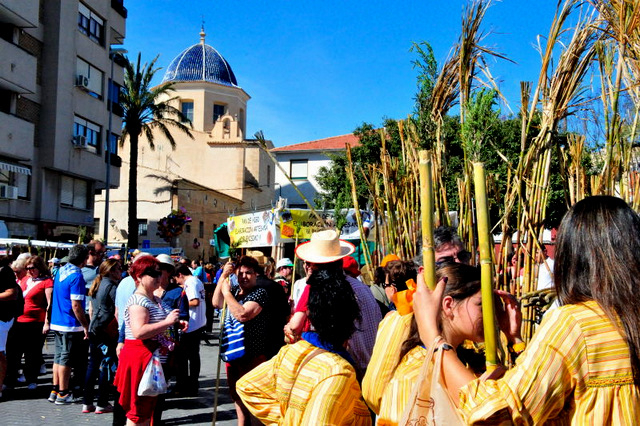 This is spread out in the park behind the monastery and around it, and is usually open for a period of several days either side of the romería itself. There are a wide range of craft products and foodstuffs on offer and there is no problem obtaining refreshments, hats etc, as the shops are also open in the village of Santa Faz. However, in main Alicante city this is a local holiday and all the tourist attractions and municipal offices and services are closed, although there are always plenty of refreshments available.
This is spread out in the park behind the monastery and around it, and is usually open for a period of several days either side of the romería itself. There are a wide range of craft products and foodstuffs on offer and there is no problem obtaining refreshments, hats etc, as the shops are also open in the village of Santa Faz. However, in main Alicante city this is a local holiday and all the tourist attractions and municipal offices and services are closed, although there are always plenty of refreshments available.
Arriving at Santa Faz
A huge queue forms to file into the plaza once the relic has arrived, which is controlled by means of a barricade. To avoid getting caught in this, follow the youngsters and their shopping trolleys around the back of the village to go straight to the market which is behind the monastery. Mass takes over an hour and nobody in the queue moves very fast at all during this time.
Clothing
Sunhat, sunglasses, backpack with a bottle of water are all essential, as are sensible flat shoes as the route is between 7 and 8 kilometres.
Canes
 These are piled up outside the back of the cathedral and by the town hall and are free of charge. Taking a cane is an act of bonding, the participant becoming a part of the event and “belonging” to the masses who walk the route together. Go along, be part of the tradition and just enjoy the walk, even if you don´t have religious leanings, being part of this day is a great experience for those who truly want to understand what “real Spain” is all about.
These are piled up outside the back of the cathedral and by the town hall and are free of charge. Taking a cane is an act of bonding, the participant becoming a part of the event and “belonging” to the masses who walk the route together. Go along, be part of the tradition and just enjoy the walk, even if you don´t have religious leanings, being part of this day is a great experience for those who truly want to understand what “real Spain” is all about.









